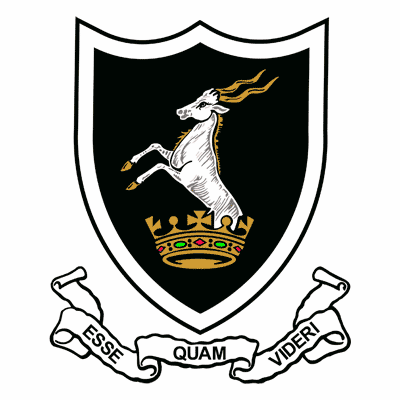


Building began almost at once and in 1915 the west wing was in use. Commercial depression and the 1914-1918 war interfered with the building programme. After the war building operations were resumed. The original grant of 10000 pounds now proved insufficient and the Administration grated an additional sum of 7000 pounds. The Tower Block and cloisters were completed and soon afterwards the Hall on the opposite side was also finished. Finally the Quadrangle enclosed by the Cloisters was grassed.
The first assembly in the new hall was held on 8 April 1921 and the first speech day a week later. The chief speaker was the M.P.C. for the area, an Old Boy of the school. The Governor-general of the Union of South Africa, Prince Arthur of Connaught, was due to visit Queenstown that same month and the opportunity was taken to invite him to open the Hall. This ceremony took place on the 18th April.
The hall was used for assemblies, concerts and prize-givings. It also served as a gymnasium and as a place for writing examinations. after the memorial Hall was built it served as a gymnasium and was referred to as such. In 1973 it became the library.
In 1922 the windows were installed and they are truly unique and magnificent. Their rich and glowing colours with the morning sun shining from behind must be seen to be believed.
The central and largest windows shows the Angel of Resurrection standing before the Portals of the Mausoleum about to sound the Last Trump. The Lion is sentinel on guard. The words on it are: "I am the Resurrection and the Life". Then there are four windows flanking it, each showing the same two boys at different ages and under different circumstances.
The first windows shows the two bys in a classroom with a master. The inscription is: "Comradeship in work." This is followed by "Comradeship in play" and shows the one boy batting and the other keeping wicket. The third, "Comradeship in religion" shows the boys in chapel talking to a master. The final is a battle scene showing one boy going to the aid of his wounded comrade. The inscription is: "Comradeship in danger." The last windows was inspired by the heroic action of one of the Winslow brothers who was killed in battle when he went to help his mortally wounded brother.
Below the windows is a bronze tablet bearing in relief the names of eighty fallen. The inscription reads: "To the glory of God the above windows are erected in honoured memory of the eighty members of Queen's College who gave their lives in the Great War. There name liveth for evermore.